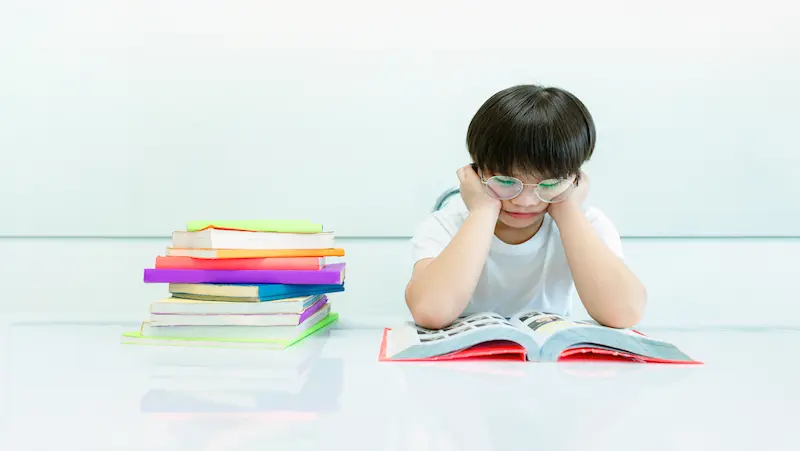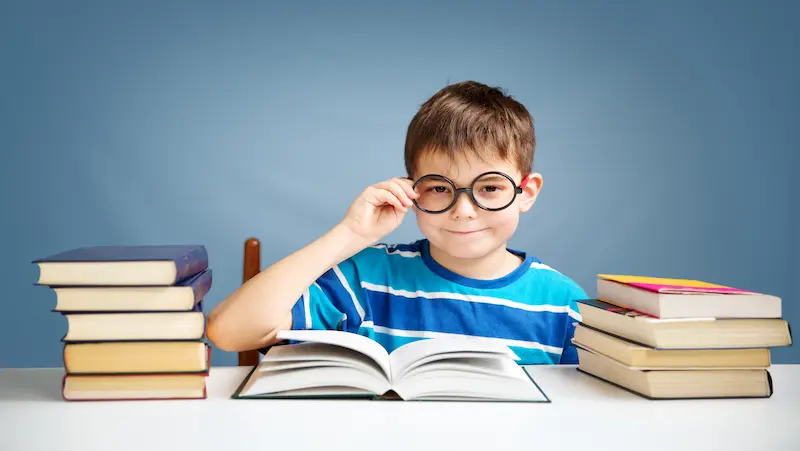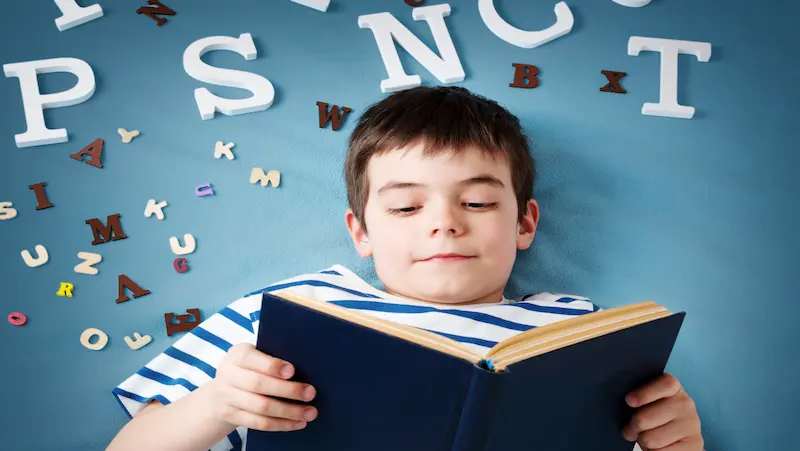In today’s fast-paced and digitally connected world, it is crucial to prioritise the mental well-being of our children. Mindfulness, the practice of being present in the moment with non-judgmental awareness, has proven to be an effective tool for promoting emotional resilience, self-regulation, and overall mental health in children.
One wonderful way to introduce mindfulness to young minds is through engaging and thoughtful books. In this blog, we will explore the benefits of mindfulness for children, discuss the criteria for selecting mindfulness books, and recommend some of the best mindfulness books for children of different age groups.
Table of contents
Understanding Mindfulness for Children
To introduce mindfulness to children, it is important to break down the concept into easily understandable sub-sections. Let’s explore each sub-section in detail:

Mindfulness as Present-Moment Awareness:
a. Teaching children to focus on the present moment: Explain the importance of paying attention to what is happening right now, rather than dwelling on the past or worrying about the future.
b. Observing thoughts and feelings: Help children understand that mindfulness involves noticing their thoughts, emotions, and sensations without judgement or criticism.
Cultivating Calm and Self-Awareness:
a. Promoting a sense of calm: Explain how mindfulness practices, such as deep breathing and relaxation techniques, can help children find inner peace and reduce stress.
b. Developing self-awareness: Encourage children to explore their own thoughts, emotions, and physical sensations, fostering a deeper understanding of themselves.
Benefits of Mindfulness for Children:
a. Emotional regulation: Discuss how mindfulness can help children manage their emotions by recognizing and accepting them without becoming overwhelmed.
b. Improved focus and concentration: Explain how mindfulness practices can enhance children’s ability to stay focused and concentrate on tasks, leading to improved academic performance.
c. Stress reduction: Emphasise how mindfulness techniques can help children cope with stress and anxiety, promoting a sense of well-being and resilience.
Mindfulness Practices for Children:
a. Deep breathing exercises: Teach children simple deep breathing techniques, such as belly breathing, to help them calm their minds and bodies.
b. Body awareness activities: Guide children through body scans or gentle movements to help them connect with their physical sensations and develop body awareness.
c. Mindful sensory experiences: Encourage children to explore their senses mindfully, such as engaging in mindful eating or noticing the sounds, smells, and textures around them.
By breaking down mindfulness into these sub-sections, parents can effectively introduce children to the concept and its various benefits. Understanding mindfulness in terms that children can grasp will lay the foundation for further exploration through books and practical activities.
Criteria for Selecting Mindfulness Books
Reading stories for kids that focus on mindfulness can help them learn valuable techniques for staying present and finding calm in their busy lives. Exploring books for kids that center around mindfulness can provide them with valuable tools for managing their emotions and staying present.
When choosing mindfulness books for children, there are several important criteria to consider. Let’s break down these criteria into sub-divisions:

Age-appropriate content and illustrations:
a. Language and concepts: The book should use age-appropriate language and concepts that children can understand and relate to.
b. Visual appeal: The illustrations should be engaging and visually appealing, capturing children’s attention and imagination.
Engaging storytelling and interactive elements:
a. Narrative style: The book should have a compelling narrative that captivates children and keeps them engaged throughout.
b. Interactive features: Interactive elements like flaps, pop-ups, or activities can make the reading experience more interactive and enjoyable for children.
Incorporation of mindfulness exercises or techniques:
a. Practical applications: The book should introduce mindfulness exercises or techniques that children can easily understand and practise in their daily lives.
b. Relevance to children’s experiences: The mindfulness activities should be relevant to children’s everyday experiences, making it easier for them to connect and apply them.
Considering these criteria ensures that the selected mindfulness books are not only age-appropriate and visually appealing but also effectively convey mindfulness concepts and provide practical tools for children to incorporate mindfulness into their lives.
Best Mindfulness Books for Preschoolers

For children aged 2-5, we recommend the following mindfulness books that are not only captivating but also introduce mindfulness in a playful and accessible way:
“Moody Cow Meditates” by Kerry Lee MacLean: This book tells the story of Peter, a moody cow, who learns to calm his mind through meditation. It includes simple breathing exercises and visualisations that preschoolers can practise.
“Listening to My Body” by Gabi Garcia: Through colourful illustrations and relatable examples, this book teaches children how to listen to their bodies’ cues, identify emotions, and respond with mindfulness.
“Sitting Still Like a Frog” by Eline Snel: This interactive book comes with a CD of guided mindfulness exercises. It introduces children to mindfulness through fun activities and helps them develop self-awareness and inner calm.
Best Mindfulness Books for Elementary School Children

As children grow older, their understanding of mindfulness deepens. Here are some recommended mindfulness books for children aged 6-12:
“A Handful of Quiet: Happiness in Four Pebbles” by Thich Nhat Hanh: This beautifully illustrated book introduces children to mindfulness through pebble meditation. It encourages them to cultivate peace, gratitude, and happiness in their lives.
“I Am Peace: A Book of Mindfulness” by Susan Verde: Through simple yet powerful language, this book teaches children the importance of finding inner peace, managing strong emotions, and spreading kindness to others.
“Master of Mindfulness: How to Be Your Own Superhero in Times of Stress” by Laurie Grossman: This book combines storytelling and practical mindfulness techniques to help children navigate stress and build resilience.
Mindfulness Books for Tweens and Teens

Teenagers face unique challenges and can benefit greatly from mindfulness practices. Here are some mindfulness books suitable for older children:
“The Mindful Teen: Powerful Skills to Help You Handle Stress One Moment at a Time” by Dzung X. Vo: This book provides practical strategies for managing stress, cultivating self-compassion, and developing healthy relationships.
“Breathe Like a Bear: 30 Mindful Moments for Kids to Feel Calm and Focused Anytime, Anywhere” by Kira Willey: With thirty short and accessible mindfulness activities, this book empowers teenagers to find moments of calm and focus in their busy lives.
Check out mindfulness actvities for kids.
Integrating Mindfulness into Daily Life

To make mindfulness a part of children’s daily routines, parents can try the following tips:
Create a calm corner: Set up a designated space where children can go to relax, reflect, and practise mindfulness activities.
Mindful meals: Encourage children to eat mindfully by paying attention to the taste, texture, and smell of their food. Teach them to savour each bite and cultivate gratitude for the nourishment they receive.
Nature walks: Take children on mindful nature walks, encouraging them to observe and appreciate the beauty of their surroundings.
Encouraging with inspirational quotes for kids empowers them to believe in their limitless potential and approach challenges with a positive mindset.
Conclusion
In today’s hectic world, fostering mindfulness in children is more important than ever. Mindfulness books provide a gateway to introducing children to the practice in an accessible and engaging way. By incorporating mindfulness into their daily lives and sharing mindfulness books with their children, parents can empower their young ones with the tools needed to navigate life’s challenges and nurture their mental well-being.
Mindfulness meditation for kids is also a valuable practice that helps them develop focus and emotional awareness. Encouraging them to sit comfortably, close their eyes gently, and take deep breaths while paying attention to their breath can promote relaxation and self-regulation.
So, let’s embark on this mindful journey together and create a brighter future for our children. Learn about robotics for kids and robotics programming for kids also.
Also, BrightChamps provides a comprehensive platform for learning about money for kids, offering interactive and engaging resources that teach financial literacy, budgeting, saving, and other essential money management skills.
Frequently Asked Questions(FAQ’s)
A1: Mindfulness books for children are books that introduce and explore the concept of mindfulness in a language and format suitable for young readers. These books often incorporate engaging storytelling, colourful illustrations, and mindfulness exercises or techniques. They are important because they provide children with accessible tools and techniques to cultivate mindfulness, which can contribute to their emotional well-being, self-regulation, and overall mental health.
A2: Mindfulness books help nurture young minds by introducing children to the practice of mindfulness in an engaging and relatable way. Through captivating stories, interactive elements, and mindfulness exercises, these books teach children important skills such as emotional awareness, self-regulation, and stress management. They provide practical tools that children can apply in their daily lives, fostering resilience, concentration, and a positive mindset.
A3: Mindfulness books are available for various age groups, ranging from preschoolers to teenagers. There are mindfulness books specifically designed for different developmental stages, ensuring that the content, language, and concepts are appropriate and engaging for each age group.
A4: Introducing mindfulness to children at an early age can have numerous benefits. It helps children develop emotional intelligence, self-awareness, and the ability to regulate their emotions. Mindfulness practices can also enhance concentration, focus, and attention span. Additionally, mindfulness promotes stress reduction, resilience, and positive mental well-being in children.
A5: Yes, there is scientific research supporting the effectiveness of mindfulness practices, including the use of mindfulness books for children. Studies have shown that mindfulness interventions can improve children’s attention, emotional regulation, and overall psychological well-being. These interventions, including mindfulness books, have been found to be effective in various settings, including schools and clinical settings.
A6: Absolutely. Mindfulness books are valuable tools for teaching emotional intelligence and self-regulation. They help children recognize and understand their emotions, develop empathy towards others, and learn effective strategies for managing and expressing emotions in a healthy manner. Mindfulness practices, presented in these books, provide children with tools to self-regulate and navigate challenging emotions.
A7: Mindfulness books often include exercises and techniques that promote concentration and focus. By engaging children in mindful activities, such as deep breathing or sensory awareness exercises, these books help children practise being fully present in the moment. Over time, this cultivates their ability to concentrate, sustain attention, and engage more deeply in tasks or activities.
A8: Some popular and highly recommended mindfulness books for children include “Sitting Still Like a Frog” by Eline Snel, “Moody Cow Meditates” by Kerry Lee MacLean, “I Am Peace: A Book of Mindfulness” by Susan Verde, and “Master of Mindfulness: How to Be Your Own Superhero in Times of Stress” by Laurie Grossman. These books offer engaging stories, relatable characters, and practical mindfulness exercises suitable for different age groups.
A9: Yes, there are mindfulness books specifically designed for children with special needs or learning differences. These books often incorporate visual support, simplified language, and activities that cater to different learning styles. Examples include “Visiting Feelings” by Lauren Rubenstein and “Mindful Me: Mindfulness and Meditation for Kids” by Whitney Stewart, which offer inclusive mindfulness practices.
A10: Parents and educators can integrate mindfulness books into daily routines or classroom activities in several ways:
Set aside regular reading time dedicated to mindfulness books.
Engage children in discussions about the mindfulness concepts presented in the books.
Incorporate mindfulness exercises or activities inspired by the books into daily routines.
Encourage children to practise mindfulness independently and provide guidance and support when needed.
Create a calm and supportive environment that fosters mindfulness practice.
Collaborate with other parents or educators to explore and share mindfulness books and activities.
Adapt mindfulness books and activities to suit the unique needs and interests of children.


 We are an army of educators and passionate learners from BrightChamps family, committed to providing free learning resources to kids, parents & students.
We are an army of educators and passionate learners from BrightChamps family, committed to providing free learning resources to kids, parents & students.













